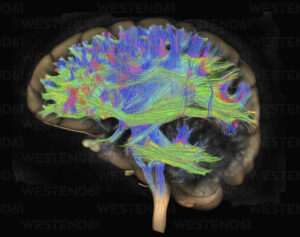
University of Louisville researchers have developed a new AI-powered tool that could help doctors diagnose autism at a younger age.
Autism is a spectrum of developmental disabilities impacting social skills, language processing, cognition and other functions. The UofL tool has been shown to be 98.5% accurate in diagnosing kids as young as two, which could give doctors more time to intervene with potentially life-changing therapy. Their results were published in the journal Biomedicines.
“Therapy could be the difference between an individual needing full-time care and being independent, holding a job and living a fulfilled life,” said Ayman El-Baz, a co-inventor and professor and chair in the J.B. Speed School of Engineering. He developed the technology with Gregory Barnes and Manuel Casanova of the UofL School of Medicine.
Research shows therapy can have the most impact if done in early childhood, when the brain is more elastic. However, currently, less than half of kids are tested before age three and even fewer are diagnosed by age eight. The problem, the researchers say, is one of supply and demand — there are too many patients and too few specialists to conduct the interviews and examinations needed for diagnosis.
“As a result, there’s an urgent need for a new, objective technology that can help us diagnose kids early,” said Barnes, a professor of neurology and executive director of the UofL Autism Center. “We think our tool can help fill that need, while providing more objectivity over the current interview method.”
With the UofL technology, AI can make the initial diagnosis, which researchers think could reduce specialist workload by as much as 30%. The specialist would meet later with the patient to confirm the diagnosis and talk about next steps.
The UofL technology works by using AI to analyze magnetic resonance imaging (MRI) scans for differences and abnormal connections that may indicate autism. Tested against scans of 226 children between the ages of 24 and 48 months, the technology was able to identify the 120-some children with autism with near perfect accuracy.
By looking at the physical structures of the brain rather than using interviews, researchers believe they can make diagnoses more objective and target the specific parts of the brain that may benefit most from therapy.
“The idea is that by drawing from both medicine and engineering, we can come up with a better solution that improves lives,” said Mohamed Khudri, a bioengineering undergraduate student and author on the paper.
The diagnostic technology and intellectual property received support through UofL’s Office of Research and Innovation. That includes the office’s suite of innovation programs, aimed at developing research-backed inventions for market, including the prestigious national Innovation Corps (I-Corps) program through the National Science Foundation. UofL is one of only a handful of universities nationwide to have each of these programs — and it’s the only one to have them all.
































